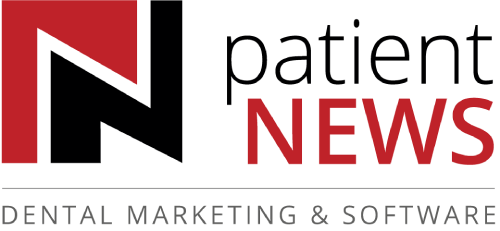Do You Do The Top 5?

I can remember that over 10 years ago, SEO was everything; the bread and butter of the internet. Even 5 years ago – SEO was a big buzz! Today? Those of us in the tech and marketing sectors debate the importance, argue what SEO really means, and I’m sure, you the dentist may feel left out, wondering where to turn.
Is SEO important? How will it affect my website results? How do I know what I’m doing is right? This blog will clarify the value of SEO and give you the top-ranking factors for excellent dental website SEO in 2020.
What Is SEO?
Let’s kick things off with agreeing on what SEO is in the first place.
SEO stands for search engine optimization. Search engines such as Google and Bing need to provide answers to people’s questions. But how does Google choose what answer to provide? It’s looking for many things, and this is essentially what SEO is – ensuring your dental website is optimized with the right criteria so that it ranks high in the list of Google’s best choices when delivering results for a visitor’s search … serving up your business name and contact information to hungry consumers.
Google has to make a good decision as to what business to list first and foremost. If Google delivers bad information, people will use Bing, and of course Google doesn’t want that. SEO is an optimization strategy to tell Google, “PICK ME! CHOOSE ME!”
If you follow Google’s criteria and optimize your website to fit their requirements, there is a good chance Google will serve you to the masses!
How Do I Get My Dental Practice Rank On Page #1?
Now that that we all know what SEO is, how do we get Google and Bing to pick your dental practice to show up first? Shouldn’t be too complicated, right? WRONG!
It is 2000-reasons-complicated and an art and a science.
What makes it even more difficult is that search engines like Google and Bing won’t provide an exact science to get you to page one. You must follow “guidelines.” For example, your website must load quickly, have a great user experience, have a low bounce rate (people stay on your site and don’t immediately abandon), high-quality relevant keywords, long-form content, and security measures such as an SSL.
You see, if Google gets signals that your website performs well from a technological standpoint, then that is a positive indicator that the user will enjoy the experience, and therefore the search engine will consider increasing your ranking. These are just 5 or 6 reasons why your site may rank on page one. As mentioned, there are over 2000 reasons.
To help you understand the most important SEO concepts, I’ll hone in on the top 5 optimization techniques to get your dental practice ranking!
Remember as a dental practice, professional service, and a community-based business, your website’s ranking signals must be locally focused. Not only do you need to optimize your website technology, but you must also optimize to rank for searches by people in your community who are, of course, looking for a dentist. To sum it all up, here are…
The Top 5 Ranking Factors In 2020 For Dental Practice SEO
1. Ensure High-Quality Content
Rand Fishkin, a world-renowned SEO rockstar from Moz.com says that, “High-quality content is about creating pages that increase time on page, lower bounce rate, and provide helpful content for the user.”
At Patient NEWS, we write service articles in long form, providing more robust information about dental services. We also add HD videos that explain each service to improve time-on-site and lower bounce rate. What is your practice doing on your site right now to improve these two things?
High-quality content is also about strong keywords and placing them on the right pages. Your goal is to rank each page for a dedicated keyword, i.e. you need to focus specific keywords in specific sections of content. This strategy will increase keyword depth overtime and allow for your website to be served up in more search results.
2. Be Mobile Friendly!
I feel like a broken record when writing about responsiveness and mobile-friendly design. Still to this day, many website designs deliver a terrible user experience on mobile devices. If your website does not have an excellent user experience on mobile, you can be sure it will not rank in 2020. Google will put you to the bottom of the list.
In our process at Patient NEWS, we design for three devices: mobile, tablet, and desktop. As outlined by searchenginejournal.com, Google has stated that responsive design helps their “algorithms accurately assign indexing properties to the page, rather than needing to signal the existence of corresponding desktop/mobile pages.” In other words, Google likes to kill three birds with one stone. As mentioned earlier, any time you can make it easier for a search engine to improve your results, get on it!
3. Make Your Website Secure
You may have heard the term SSL before. It stands for “Secure Sockets Layer.” Basically, when SSL is applied to your website, it has been approved with certification.
As mentioned earlier in this blog, your website gets ranked #1 when Google deems it to be a great place to send users in response to their searches. If your website is not deemed secure, why would Google send traffic there? This algorithm change was announced in 2017, and even though some sites without an SSL still rank, we are seeing a huge drop with them, especially in Chrome which 40% of internet users access as their browser.
Below is a screen shot of what a website looks like when it is secure, it will have a lock beside the URL in the URL bar, and when you click on the lock, it will present a message that explains the security.

4. Optimize Your Dental Website Page Speed
Yes, you’re hearing it again … page speed.
I’ve said it a few times in this blog and you will see it in almost any write-up about SEO today. Page speed is the cornerstone of ranking. To say it in simple terms, Google is tired of slow-loading websites. A slow load delivers a bad user experience 100% of the time. Considering there are many parts of the world that experience slow internet, your bulky coded website with bloated images and high-res, non-optimized videos are dragging users down, and as a result, Google will drop your ranking down. Speed is a major factor.
Here is a good one, as stated by SearchEngineJournal.com. “For Amazon, just one second [delay] could cost it $1.6 billion in sales each year.” WOWZERS! That’s a big number for one second of load time! On a much smaller scale, speed is still a very relevant consideration when you need to rank on page one for your dental practice SEO in order to get noticed by, and engage, your potential new patients in your community.
5. On-Site Optimization
Last and far from least, the on-site optimization that happens on a monthly basis will give your website a leg up on your competitors if correctly optimized. What does this mean?
Metadata

Metadata includes title tags and page descriptions and are the snippets that show up in the search engine results pages. Users will search for, say, dental implants, and from the Google search results, they’ll choose a dental practice that is placed high in the rankings due to the information on the title and the metadata.
So, take time to write the metadata content for each page carefully. Make sure it is relevant and helps the user to decide to choose your website.
Schema
Schema is a code in the back end of the website (not visible to the user) that tells search engines more information than the information that was included in the webpage.
There are more than 600 ways to tell a search engine the intent of your content. Marking up your website’s location information with schema will help in voice-activated searches. It’s an important consideration and Patient NEWS marks our sites with schema for increased ranking in Google and Bing.
Internal Link Structure
Your website is like a spider web, full of links from pages to pages. One example would be that on your home page, when you ask the visitor to call your practice, the words, “Call us!” is linked to your Contact Us page.
Google often sends “crawlers” to your website to search (or crawl over) each page. The crawlers follow each link on your site, takes a snapshot of your sitemap, and gives this information to Google who needs it to determine if your website is relevant based on the keywords your prospects are entering into the Google search bar.
By putting links on each page of your website, you are giving Google a structure or a roadmap it can follow to find specific topics. This gives Google the indicators that YES! You are a dentist who provides cosmetic services. This is why it’s so important to link your pages internally, back to other pages of your own website, like they’re talking to each other.
At Patient NEWS, we have a team of SEO experts who determine the best structure for your website, conceptualize around the keywords, and define and implement the best linking strategy for your site.
If you are interested in enhancing your online presence and standing out amongst the competition, our SEO for dentists services are designed to elevate your digital strategy effectively. Please don't hesitate to reach out. One of our experienced Marketing Consultants will be happy to provide you with a free consultation, helping you to navigate the complexities of SEO and ensuring your dental practice achieves its maximum online potential.
Share:
Stay In The Know!
Join 20,000 dental colleagues today!
Subscribe to our weekly updates, and/or request a free brochure and product samples.



